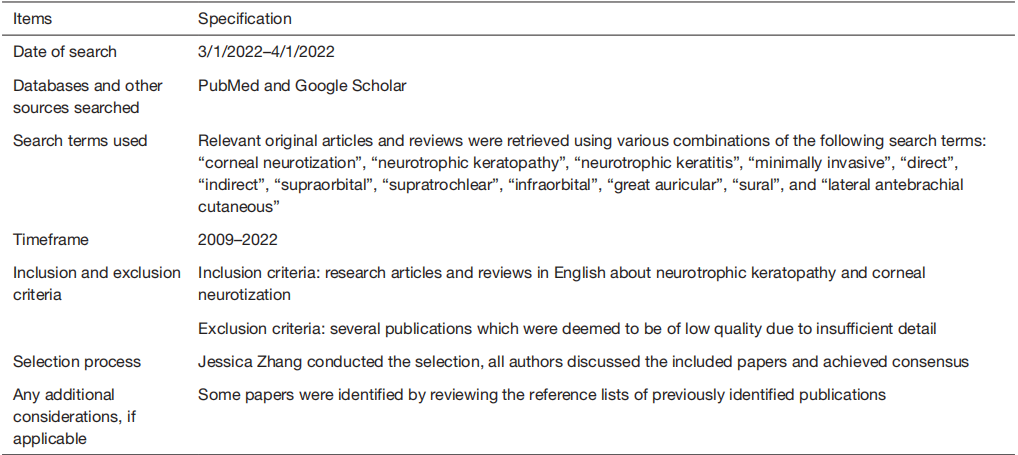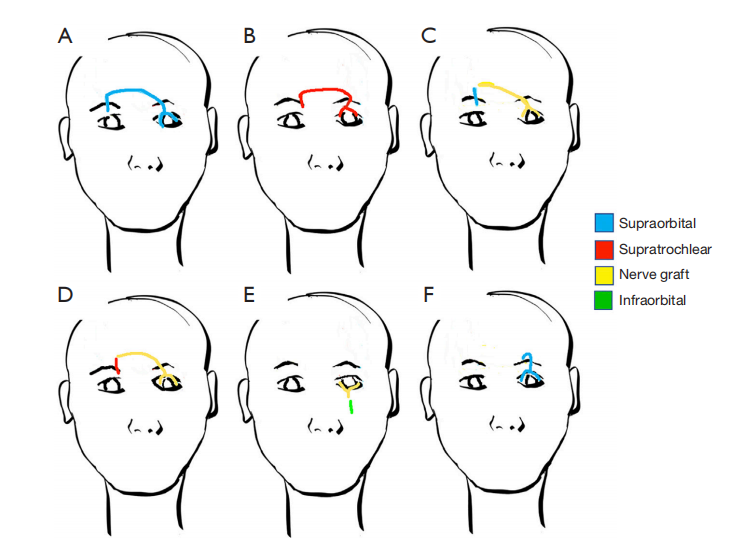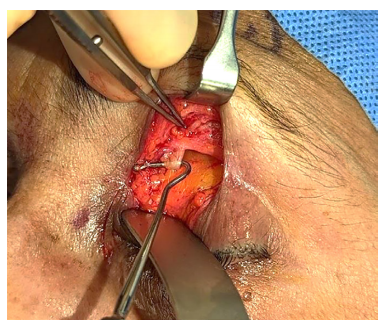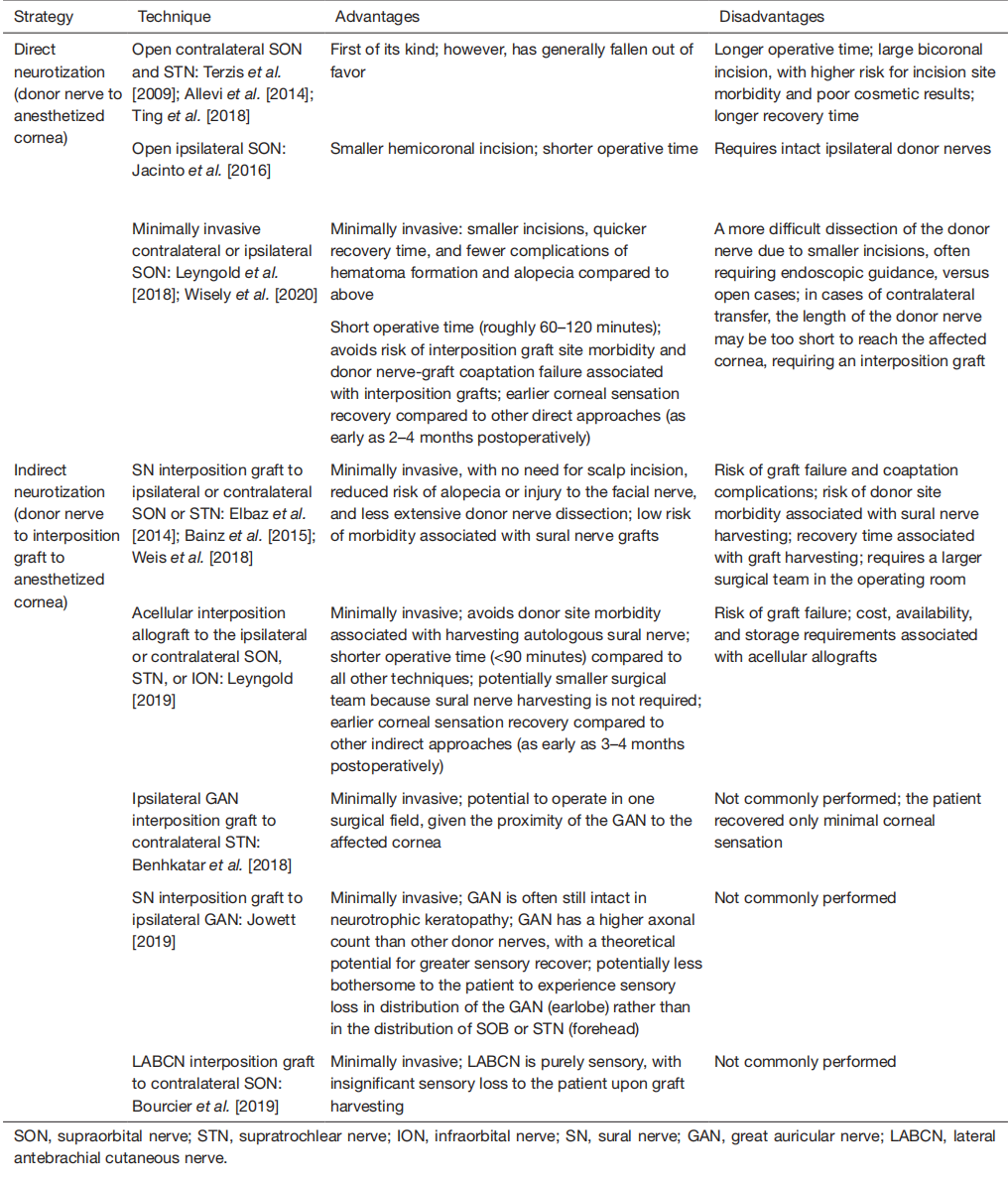1、Sacchetti M, Lambiase A. Neurotrophic factors
and corneal nerve regeneration. Neural Regen Res
2017;12:1220-4.Sacchetti M, Lambiase A. Neurotrophic factors
and corneal nerve regeneration. Neural Regen Res
2017;12:1220-4.
2、Yang AY, Chow J, Liu J. Corneal Innervation and Sensation:
The Eye and Beyond. Yale J Biol Med 2018;91:13-21.Yang AY, Chow J, Liu J. Corneal Innervation and Sensation:
The Eye and Beyond. Yale J Biol Med 2018;91:13-21.
3、Sacchetti M, Lambiase A. Diagnosis and management of
neurotrophic keratitis. Clin Ophthalmol 2014;8:571-9.Sacchetti M, Lambiase A. Diagnosis and management of
neurotrophic keratitis. Clin Ophthalmol 2014;8:571-9.
4、DelMonte DW, Kim T. Anatomy and physiology of the
cornea. J Cataract Refract Surg 2011;37:588-98.DelMonte DW, Kim T. Anatomy and physiology of the
cornea. J Cataract Refract Surg 2011;37:588-98.
5、Dua HS, Said DG, Messmer EM, et al. Neurotrophic
keratopathy. Prog Retin Eye Res 2018;66:107-31.Dua HS, Said DG, Messmer EM, et al. Neurotrophic
keratopathy. Prog Retin Eye Res 2018;66:107-31.
6、Shankland WE. The trigeminal nerve. Part II: the
ophthalmic division. Cranio 2001;19:8-12.Shankland WE. The trigeminal nerve. Part II: the
ophthalmic division. Cranio 2001;19:8-12.
7、Mackie IA. Neuroparalytic keratitis. Current Ocular
Therapy 1995:452-4.Mackie IA. Neuroparalytic keratitis. Current Ocular
Therapy 1995:452-4.
8、Jhanji V, Young AL, Mehta JS, et al. Management of
corneal perforation. Surv Ophthalmol 2011;56:522-38.Jhanji V, Young AL, Mehta JS, et al. Management of
corneal perforation. Surv Ophthalmol 2011;56:522-38.
9、Yamaguchi T, Turhan A, Harris DL, et al. Bilateral nerve
alterations in a unilateral experimental neurotrophic keratopathy model: a lateral conjunctival approach for
trigeminal axotomy. PLoS One 2013;8:e70908.Yamaguchi T, Turhan A, Harris DL, et al. Bilateral nerve
alterations in a unilateral experimental neurotrophic keratopathy model: a lateral conjunctival approach for
trigeminal axotomy. PLoS One 2013;8:e70908.
10、Oxervate Prices and Oxervate Coupons. GoodRx.
Retrieved April 25, 2022. Available online: https://www.
goodrx.com/oxervateOxervate Prices and Oxervate Coupons. GoodRx.
Retrieved April 25, 2022. Available online: https://www.
goodrx.com/oxervate
11、Leyngold IM, Yen MT, Tian J, et al. Minimally Invasive
Corneal Neurotization With Acellular Nerve Allograft:
Surgical Technique and Clinical Outcomes. Ophthalmic
Plast Reconstr Surg 2019;35:133-40.Leyngold IM, Yen MT, Tian J, et al. Minimally Invasive
Corneal Neurotization With Acellular Nerve Allograft:
Surgical Technique and Clinical Outcomes. Ophthalmic
Plast Reconstr Surg 2019;35:133-40.
12、Fung SSM, Catapano J, Elbaz U, et al. In Vivo Confocal
Microscopy Reveals Corneal Reinnervation After
Treatment of Neurotrophic Keratopathy With Corneal
Neurotization. Cornea 2018;37:109-12.Fung SSM, Catapano J, Elbaz U, et al. In Vivo Confocal
Microscopy Reveals Corneal Reinnervation After
Treatment of Neurotrophic Keratopathy With Corneal
Neurotization. Cornea 2018;37:109-12.
13、Kolseth CM, Charlson ES, Kossler AL. Corneal
Neurotization: A Surgical Treatment for Neurotrophic
Keratopathy. J Neuroophthalmol 2020;40:e11-2.Kolseth CM, Charlson ES, Kossler AL. Corneal
Neurotization: A Surgical Treatment for Neurotrophic
Keratopathy. J Neuroophthalmol 2020;40:e11-2.
14、Elbaz U, Bains R, Zuker RM, et al. Restoration of corneal
sensation with regional nerve transfers and nerve grafts: a
new approach to a difficult problem. JAMA Ophthalmol
2014;132:1289-95.Elbaz U, Bains R, Zuker RM, et al. Restoration of corneal
sensation with regional nerve transfers and nerve grafts: a
new approach to a difficult problem. JAMA Ophthalmol
2014;132:1289-95.
15、Kim JS, Rafailov L, Leyngold IM. Corneal Neurotization
for Postherpetic Neurotrophic Keratopathy: Initial
Experience and Clinical Outcomes. Ophthalmic Plast
Reconstr Surg 2021;37:42-50.Kim JS, Rafailov L, Leyngold IM. Corneal Neurotization
for Postherpetic Neurotrophic Keratopathy: Initial
Experience and Clinical Outcomes. Ophthalmic Plast
Reconstr Surg 2021;37:42-50.
16、Wisely CE, Rafailov L, Cypen S, et al. Clinical and
Morphologic Outcomes of Minimally Invasive Direct
Corneal Neurotization. Ophthalmic Plast Reconstr Surg
2020;36:451-7.Wisely CE, Rafailov L, Cypen S, et al. Clinical and
Morphologic Outcomes of Minimally Invasive Direct
Corneal Neurotization. Ophthalmic Plast Reconstr Surg
2020;36:451-7.
17、Sweeney AR, Wang M, Weller CL, et al. Outcomes
of corneal neurotisation using processed nerve
allografts: a multicentre case series. Br J Ophthalmol
2022;106:326-30.Sweeney AR, Wang M, Weller CL, et al. Outcomes
of corneal neurotisation using processed nerve
allografts: a multicentre case series. Br J Ophthalmol
2022;106:326-30.
18、Benkhatar H, Levy O, Goemaere I, et al. Corneal
Neurotization With a Great Auricular Nerve Graft:
Effective Reinnervation Demonstrated by In Vivo
Confocal Microscopy. Cornea 2018;37:647-50.Benkhatar H, Levy O, Goemaere I, et al. Corneal
Neurotization With a Great Auricular Nerve Graft:
Effective Reinnervation Demonstrated by In Vivo
Confocal Microscopy. Cornea 2018;37:647-50.
19、Jowett N, Pineda Ii R. Corneal neurotisation by great
auricular nerve transfer and scleral-corneal tunnel
incisions for neurotrophic keratopathy. Br J Ophthalmol
2019;103:1235-8.Jowett N, Pineda Ii R. Corneal neurotisation by great
auricular nerve transfer and scleral-corneal tunnel
incisions for neurotrophic keratopathy. Br J Ophthalmol
2019;103:1235-8.
20、Janis JE, Hatef DA, Hagan R, et al. Anatomy of the
supratrochlear nerve: implications for the surgical
treatment of migraine headaches. Plast Reconstr Surg
2013;131:743-50.Janis JE, Hatef DA, Hagan R, et al. Anatomy of the
supratrochlear nerve: implications for the surgical
treatment of migraine headaches. Plast Reconstr Surg
2013;131:743-50.
21、Shafique S, Das JM. Anatomy, Head and Neck, Maxillary
Nerve. StatPearls. Treasure Island (FL): StatPearls
Publishing, 2022.Shafique S, Das JM. Anatomy, Head and Neck, Maxillary
Nerve. StatPearls. Treasure Island (FL): StatPearls
Publishing, 2022.
22、Terzis JK, Dryer MM, Bodner BI. Corneal neurotization: a
novel solution to neurotrophic keratopathy. Plast Reconstr
Surg 2009;123:112-20.Terzis JK, Dryer MM, Bodner BI. Corneal neurotization: a
novel solution to neurotrophic keratopathy. Plast Reconstr
Surg 2009;123:112-20.
23、Allevi F, Fogagnolo P, Rossetti L, et al. Eyelid
reanimation, neurotisation, and transplantation of the
cornea in a patient with facial palsy. BMJ Case Rep
2014;2014:bcr2014205372.Allevi F, Fogagnolo P, Rossetti L, et al. Eyelid
reanimation, neurotisation, and transplantation of the
cornea in a patient with facial palsy. BMJ Case Rep
2014;2014:bcr2014205372.
24、Ting DSJ, Figueiredo GS, Henein C, et al. Corneal
Neurotization for Neurotrophic Keratopathy: Clinical
Outcomes and In Vivo Confocal Microscopic and
Histopathological Findings. Cornea 2018;37:641-6.Ting DSJ, Figueiredo GS, Henein C, et al. Corneal
Neurotization for Neurotrophic Keratopathy: Clinical
Outcomes and In Vivo Confocal Microscopic and
Histopathological Findings. Cornea 2018;37:641-6.
25、Jacinto F, Espana E, Padilla M, et al. Ipsilateral
supraorbital nerve transfer in a case of recalcitrant
neurotrophic keratopathy with an intact ipsilateral frontal
nerve: A novel surgical technique. Am J Ophthalmol Case
Rep 2016;4:14-7.Jacinto F, Espana E, Padilla M, et al. Ipsilateral
supraorbital nerve transfer in a case of recalcitrant
neurotrophic keratopathy with an intact ipsilateral frontal
nerve: A novel surgical technique. Am J Ophthalmol Case
Rep 2016;4:14-7.
26、Leyngold I, Weller C, Leyngold M, et al. Endoscopic
Corneal Neurotization: Technique and Initial Experience.
Ophthalmic Plast Reconstr Surg 2018;34:82-5.Leyngold I, Weller C, Leyngold M, et al. Endoscopic
Corneal Neurotization: Technique and Initial Experience.
Ophthalmic Plast Reconstr Surg 2018;34:82-5.
27、Bains RD, Elbaz U, Zuker RM, et al. Corneal
neurotization from the supratrochlear nerve with sural
nerve grafts: a minimally invasive approach. Plast Reconstr
Surg 2015;135:397e-400e.Bains RD, Elbaz U, Zuker RM, et al. Corneal
neurotization from the supratrochlear nerve with sural
nerve grafts: a minimally invasive approach. Plast Reconstr
Surg 2015;135:397e-400e.
28、Weis E, Rubinov A, Al-Ghoul AR, et al. Sural nerve graft
for neurotrophic keratitis: early results. Can J Ophthalmol
2018;53:24-9.Weis E, Rubinov A, Al-Ghoul AR, et al. Sural nerve graft
for neurotrophic keratitis: early results. Can J Ophthalmol
2018;53:24-9.
29、Bourcier T, Henrat C, Heitz A, et al. Lateral Antebrachial
Cutaneous Nerve as Autologous Graft for Mini-Invasive Corneal Neurotization (MICORNE). Cornea
2019;38:1029-32.Bourcier T, Henrat C, Heitz A, et al. Lateral Antebrachial
Cutaneous Nerve as Autologous Graft for Mini-Invasive Corneal Neurotization (MICORNE). Cornea
2019;38:1029-32.
30、Sepehripour S, Lloyd MS, Nishikawa H, et al. Surrogate
Outcome Measures for Corneal Neurotization in Infants
and Children. J Craniofac Surg 2017;28:1167-70.Sepehripour S, Lloyd MS, Nishikawa H, et al. Surrogate
Outcome Measures for Corneal Neurotization in Infants
and Children. J Craniofac Surg 2017;28:1167-70.
31、Lin CH, Lai LJ. Herpetic Corneal Keratopathy
Management Using Ipsilateral Supratrochlear Nerve
Transfer for Corneal Neurotization. Ann Plast Surg
2019;83:553-7.Lin CH, Lai LJ. Herpetic Corneal Keratopathy
Management Using Ipsilateral Supratrochlear Nerve
Transfer for Corneal Neurotization. Ann Plast Surg
2019;83:553-7.
32、Catapano J, Antonyshyn K, Zhang JJ, et al. Corneal
Neurotization Improves Ocular Surface Health in a
Novel Rat Model of Neurotrophic Keratopathy and
Corneal Neurotization. Invest Ophthalmol Vis Sci
2018;59:4345-54.Catapano J, Antonyshyn K, Zhang JJ, et al. Corneal
Neurotization Improves Ocular Surface Health in a
Novel Rat Model of Neurotrophic Keratopathy and
Corneal Neurotization. Invest Ophthalmol Vis Sci
2018;59:4345-54.
33、Liu CY, Arteaga AC, Fung SE, et al. Corneal neurotization
for neurotrophic keratopathy: Review of surgical
techniques and outcomes. Ocul Surf 2021;20:163-72.Liu CY, Arteaga AC, Fung SE, et al. Corneal neurotization
for neurotrophic keratopathy: Review of surgical
techniques and outcomes. Ocul Surf 2021;20:163-72.
34、Fogagnolo P, Giannaccare G, Bolognesi F, et al. Direct
Versus Indirect Corneal Neurotization for the Treatment
of Neurotrophic Keratopathy: A Multicenter Prospective
Comparative Study. Am J Ophthalmol 2020;220:203-14.Fogagnolo P, Giannaccare G, Bolognesi F, et al. Direct
Versus Indirect Corneal Neurotization for the Treatment
of Neurotrophic Keratopathy: A Multicenter Prospective
Comparative Study. Am J Ophthalmol 2020;220:203-14.
35、Park JK, Charlson ES, Leyngold I, et al. Corneal
Neurotization: A Review of Pathophysiology and Outcomes.
Ophthalmic Plast Reconstr Surg 2020;36:431-7.Park JK, Charlson ES, Leyngold I, et al. Corneal
Neurotization: A Review of Pathophysiology and Outcomes.
Ophthalmic Plast Reconstr Surg 2020;36:431-7.
36、Wolkow N, Habib LA, Yoon MK, et al. Corneal
Neurotization: Review of a New Surgical Approach and Its
Developments. Semin Ophthalmol 2019;34:473-87.Wolkow N, Habib LA, Yoon MK, et al. Corneal
Neurotization: Review of a New Surgical Approach and Its
Developments. Semin Ophthalmol 2019;34:473-87.
37、Bonini S, Lambiase A, Rama P, et al. Phase II Randomized,
Double-Masked, Vehicle-Controlled Trial of Recombinant
Human Nerve Growth Factor for Neurotrophic Keratitis.
Ophthalmology 2018;125:1332-43.Bonini S, Lambiase A, Rama P, et al. Phase II Randomized,
Double-Masked, Vehicle-Controlled Trial of Recombinant
Human Nerve Growth Factor for Neurotrophic Keratitis.
Ophthalmology 2018;125:1332-43.




